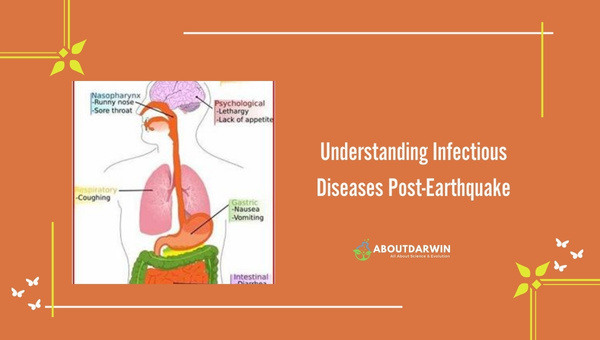Physical Address
304 North Cardinal St.
Dorchester Center, MA 02124
It’s a sobering reality: the potential threats we face in the aftermath of an earthquake or Post-Earthquake don’t end with the trembling of the ground.
Infectious diseases like diarrhea, swine flu, and more can sweep through communities, adding to an already stressful scenario. Realizing this may make one feel helpless or anxious – but there is hope.
Education and preparation are our best defenses against these looming dangers. In this post, I want to share some vital information about these health risks and simple yet effective strategies for protecting ourselves from infectious diseases post-earthquake.
Let’s step forward together into preparedness, embracing resilience in situations that might initially seem daunting.
Contents
Natural disasters like earthquakes leave devastation and chaos in their wake, parallelly escalating the risk of infectious diseases, such as diarrhea and swine flu, among others.

These illnesses can spread rampantly due to the compromising conditions after a quake.
These are key points for the Identification of Infectious Diseases:
Risks Associated with Earthquakes are as follows :
Also Read: Cetrimide Agar: Uncover Its Composition, Principle, and More
These are the steps you should follow :
Hygiene plays a critical role in preventing the spread of diseases post-earthquake. A significant step here is regular handwashing with soap and safe water — before eating, after using the toilet, or cleaning up debris — which can significantly lower infection risks.
If there are vaccines available for certain common infectious diseases post-earthquake, like Hepatitis A/B or cholera – make sure you get these shots without delay! These can protect against severe outcomes from such illnesses.
Also, consider getting vaccinated for influenza (flu shot) if it’s flu season. This preventive measure will not only keep you safe but also help curb further pressure on health services that are already stretched because of the earthquake aftermath.
Also Read: Sabouraud Dextrose Agar (SDA): Composition, Uses, and More
Planning and taking precautions today can help you protect yourself from infectious diseases post-earthquake.

A robust plan involves assembling a preparedness kit, vaccinating oneself when possible, and setting up safe zones should the unfortunate occur.
You must see the table given below:
| Items in Kit | Importance |
|---|---|
| Hand Sanitizers | Keep hands clean when soap/water isn’t available. |
| Masks | Offer protection against airborne infections. |
| First-aid supplies | Treat minor injuries to prevent infection. |
| Clean Water Supplies | Prevent waterborne diseases like diarrhea. |
| Non-perishable Food | Ensure nutrient intake, minimizing disease vulnerability. |
| Emergency Blankets | Provide warmth, lowering susceptibility to diseases. |
Creating predetermined safe zones is an integral part of your disaster response plan. While choosing your safe zone spots, ensure they are located on stable terrains that aren’t prone to flooding or landslides post-earthquake.
A solid understanding of crowd dynamics in times of crisis can be beneficial. Overcrowded shelters or aid distribution centers may increase your exposure risk to infections. Wherever possible, it’s advantageous to maintain social distancing even within these safe zones.
Also Read: Isostatic Rebound: Uncovering Post-glacial Rebound Process
Diarrhea, swine flu, and skin infections are common post-earthquake.
Earthquakes damage sanitation systems and healthcare facilities, resulting in contaminated water and limited medical assistance.
Yes, regular handwashing is crucial. They should consume only purified water and food as their immune systems might be weaker.
It’s safest to consume bottled or boiled water whenever possible after a quake.
Also Read: Earth’s Geomagnetic Reversal: The Phenomenon of Polarity Flip
In sum, earthquakes not only pose immediate physical hazards but also increase our vulnerability to infectious diseases like diarrhea and swine flu. Being proactive about hygiene practices in such a chaotic aftermath might seem difficult, but it’s critical to safeguarding health amidst the tumult.
Having an understanding and awareness of these potential threats allows us to prepare ourselves better. Remaining vigilant about possible symptoms and acting promptly can make a difference. It’s all about taking charge of what we can control during tumultuous times like these – which is our health and safety.